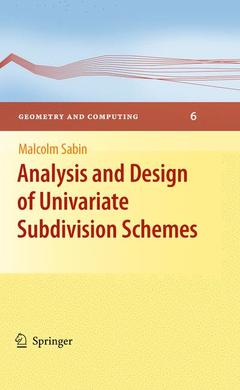Analysis and Design of Univariate Subdivision Schemes, 2010 Geometry and Computing Series, Vol. 6
Auteur : Sabin Malcolm

All the fundamental ideas
Presented in an accessible fashion even for those whose mathematics is a tool to be used, not a way of life
Separate sections on mathematical techniques providing revision for those needing it
Date de parution : 10-2012
Ouvrage de 218 p.
15.5x23.5 cm
Disponible chez l'éditeur (délai d'approvisionnement : 15 jours).
Prix indicatif 52,74 €
Ajouter au panierDate de parution : 08-2010
Ouvrage de 218 p.
15.5x23.5 cm
Disponible chez l'éditeur (délai d'approvisionnement : 15 jours).
Prix indicatif 52,74 €
Ajouter au panierThèmes d’Analysis and Design of Univariate Subdivision Schemes :
Mots-clés :
CAD; CAE; computer graphics; computer-aided design (CAD); rendering; splines; subdivision schemes



